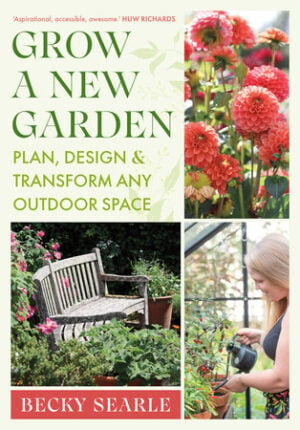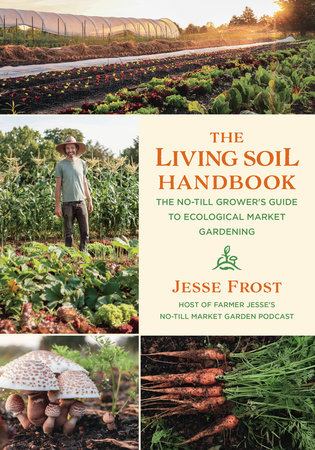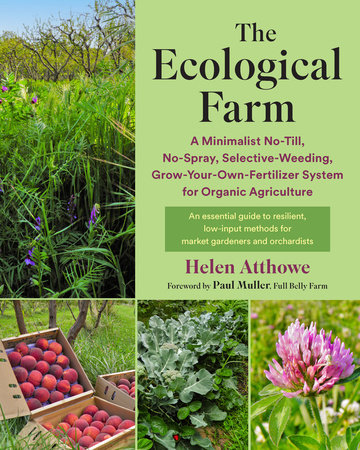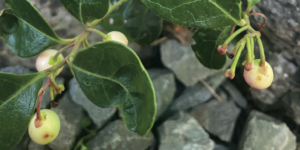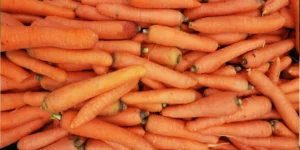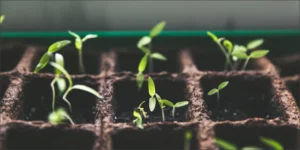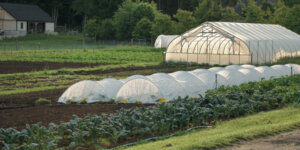It All Starts with Soil: Healthy Soil Means Healthy Plants
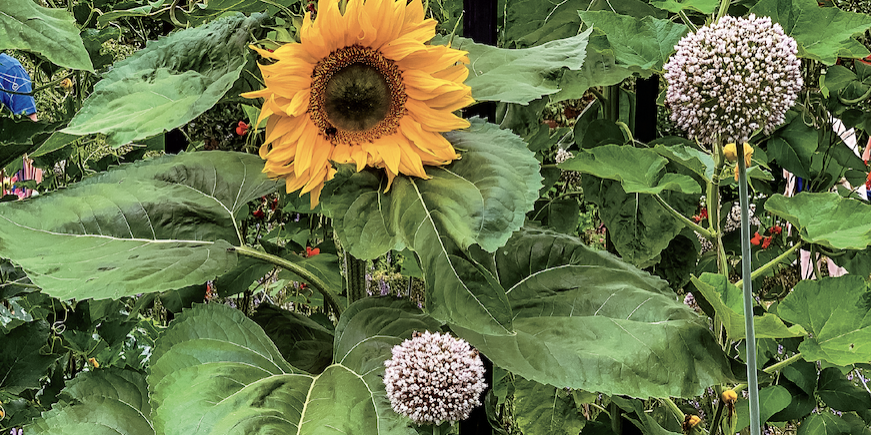
The following excerpt is from Grow a New Garden: Plan, design and transform any outdoor space by Becky Searle. It has been adapted for the web.
If you’re not a gardener yet, and you have never unashamedly added horse manure to your Christmas list, you might be tempted to skip this chapter. But even if you skip the rest of the book, I implore you to read at least this chapter. This one is by far the most important in the whole book and contains information that most gardening books don’t. If you have come here specifically for this chapter, then I welcome you, and I hope it doesn’t disappoint!
I am what my family would call (if they were honest rather than kind) an ‘insufferable bore’ when it comes to soil. I genuinely believe that it is one of the most important things on Earth. I don’t think it would be right to single out one thing because, as an ecologist, the first thing I learned is that everything is connected. We can’t have soil without trees, and we can’t have trees without soil.
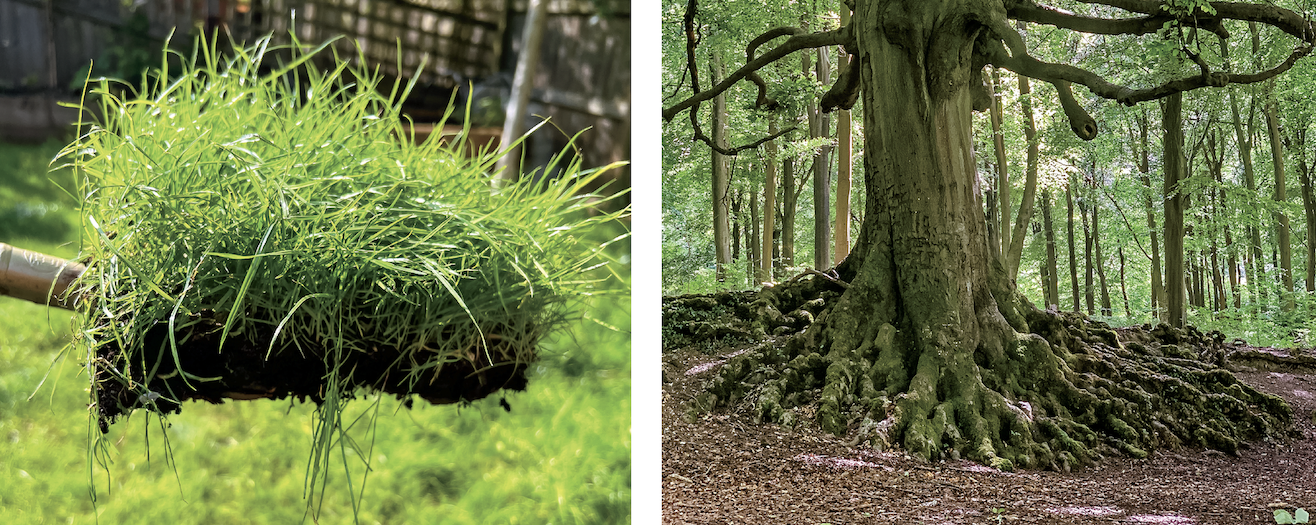
Left, It all starts with soil. Right, Plant roots have an intimate relationship with the soil.
Soil, however, is responsible for an awful lot more than we usually give it credit for. Gardeners tend to understand that soil holds water and nutrients that our plants need, and helpfully provides our plants with anchorage so they don’t topple over. But soil is also the largest freshwater reservoir on the planet, the biggest carbon sink, and the most biodiverse ecosystem in the world. Soil is responsible for producing 95 per cent of the world’s crops, and almost all terrestrial life relies on the top 6 inches of soil.
In our gardens, healthy soil can:
- regulate water levels to help prevent flooding and drying out
- feed our plants without the need for fertiliser
- help combat pests and diseases in and out of the soil
- bolster biodiversity and help foster balance in your garden ecosystem
- manage its own pH
- reduce weeds
Healthy soil means healthy plants. This all sounds quite exciting, but it’s difficult to understand how this works and, therefore, difficult to trust that it works unless you first know a little bit about soil.
SOIL IS AN ECOSYSTEM

Healthy soil means healthy plants.
We gardeners obsess about soil. We talk about it, we read about it, we complain about it, and we work it. We add to our soils, we dig into our soils, we test our soils, and we plant in our soils. But very few of us actually understand soil (though soil is becoming more of a hot topic these days, so more are starting to understand it).
The first thing that you must know about soil is that it is a living, breathing ecosystem.
It’s a collection of plants and animals interacting with one another in their environment. In fact, there are more tiny organisms in one handful of healthy soil than humans who have ever lived on the planet.
I give talks about this all the time, and the one thing I hear over and over is, ‘Not my soil. Mine’s totally dead.’ Well, let me reassure you: unless your soil is submerged in water on a constant basis, has been put through a microwave or has been drenched in chemicals, it’s probably not totally dead. Most soils can be reinvigorated and rejuvenated.
The soil ecosystem functions in much the same way as any other ecosystem. The only difference is that most of it is microscopic. It is for this one simple reason that it has not been observed as an ecosystem until relatively recently. Incidentally, this is also why some people believe their soil to be completely dead. Just as in every other ecosystem, the soil contains a dazzling diversity of creatures, all occupying their own specific niche. In doing so, many of them are also maintaining the environment around them.
As children, we are taught about food chains. I had the distinct honour of teaching my eldest about food chains during lockdown. We are taught things like a caterpillar eats plants and a bird eats a caterpillar. Of course, we gardeners know that there are many more things that eat our plants than just caterpillars, so things are never as simple as they are in a food chain. This description is merely a representation for young children to understand the idea.
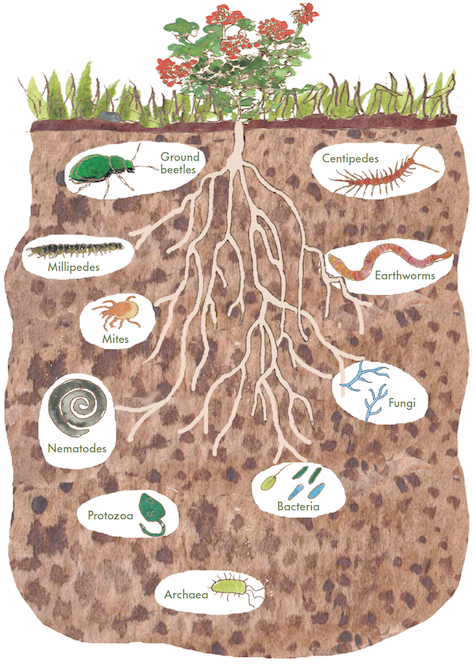
The soil food web: nutrients are cycled through the soil by the life in the soil, which in turn creates good soil structure
Closer to the truth is what is known as a food web. These diagrams demonstrate the interconnectedness of multiple animals and plants. But what food webs and food chains have in common is that they both start with plants. The reason for this starting point is that plants are the only primary producers. This means that they turn thin air into food or gas into mass.
Another way of looking at this is that there is no food on the planet that doesn’t, at some point, come from plants. That’s right, even Mars bars and HARIBO Goldbears, which I consider to be very far from plants, at one point along their lifetimes were just that.
Inside the soil exists a delicate and complex food web, and, like other food webs and food chains, it starts with plants. The life in the soil feeds primarily on dead leaves. But there is another plant-based food source for the soil food web, and it comes in the form of something called root exudates.
These are little packages of sugar and other carbohydrates that plants produce during photosynthesis and pump down through their roots into the soil to feed the organisms in the soil. This exchange shows us something important about the soil ecosystem. The organisms in the soil are not taking it from the plants; the plants are giving it away willingly. In fact, some plants give as much as 40 per cent of the carbohydrates they produce.
This gift is pretty baffling until you understand why they do this. You see, the most important thing to understand about soil is that plants and the soil ecosystem exist in symbiosis. This means that they have a mutualistic relationship, where both the plants and the soil benefit. So what are the plants getting out of it?
The soil ecosystem actually does an awful lot for plants. Firstly, it helps to maintain soil structure. Good soil structure can hold on to water without getting waterlogged and hold on to air so that plant roots can respire. The life in the soil also helps to release nutrients to our plants and offers protection from a few organisms that live in the soil and can cause them damage, such as pests and disease-causing microbes.
HOW PLANTS GET THEIR NUTRIENTS
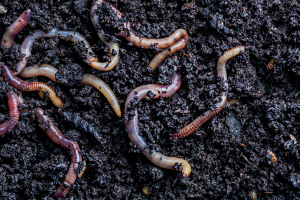
There are so many creatures that live in the soil – earthworms are really just the poster boys.
Most soils contain plenty of nutrients, but they are locked up in the organic matter, sediments, particles and even the bedrock of the soil. Unfortunately for plants, they do not possess the necessary tools to extract these nutrients. Plant roots can only draw up water and nutrients from the soil like a straw.
When my children were little, I would give them little smoothies in cartons. They loved the smoothies but weren’t able to get into them. It was up to me to take the straw and pierce the little foil seal so that they could drink. I was the soil organisms unpacking the nutrients so my plant children could suck it up through their straws. If nutrients in the soil existed in a form that could easily be dissolved into water and taken up by plant roots, a few decent rainfall events would see all the nutrients in the soil washed away. Therefore, nature has devised a strategy to keep the nutrients in the soil and allow plants to have access to them. And that is where the soil food web comes in. They’re the ones that pierce the foil for the plants.
Organisms in the soil can break down organic compounds and chemical bonds, allowing the nutrients to be dissolved into water and thus releasing them to the plants.
The mechanism used for breakdown differs between different nutrients and different organisms, but the basic principle is that nutrients are released by everyday eating and excreting carried out by organisms in the soil. Each one plays a slightly different role. It’s important not to get bogged down in the details of this – exactly how it works really doesn’t matter to us as gardeners – but it is incredibly important to understand that plants cannot get nutrients from the soil without the microorganisms in the soil.
For many years the question of why the soil food web would offer this service to plants utterly baffled scientists. But now that we understand about root exudates, it makes complete sense. The organisms in the soil want to take care of our plants, want them to be healthy, so they can get their delicious root exudates. This partnership goes so far that plants regularly use chemical signals sent down through their roots to request specific nutrients when they need it. This is an oversimplification of how the process works, but essentially a plant will produce and use special sugars and other carbohydrates to attract organisms that can help them get hold of the nutrients they need.
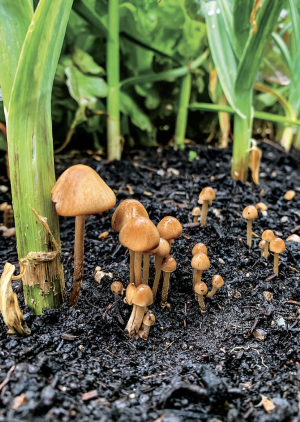
Plants work with the life in the soil, including fungi, to get nutrients in exchange for the sugars and other carbohydrates they provide.
This request process means that plants can have the nutrients they need before they start to show signs of deficiencies. Standard modern-day gardening advice would be to feed your plants with liquid nutrients. We can only discern if this is not working correctly or if a plant is missing out on a particular nutrient by detecting discolouration or changes in growth.
Not only does this require us to be extraordinarily aware of what our plants are doing, but it also requires us to know how to react. If our plants get nutrients through the natural processes in the soil, there is no need to second-guess their needs. So, we can instead put our efforts into building a healthy soil ecosystem, which is a far simpler task!
The other problem with liquid plant feeds is that they interrupt the reciprocity between the soil and the plant. If a plant can get its nutrients without having to feed organisms in the soil, it will. So by putting fertilisers onto our beds we can actually create lazy plants.
This result is a particular shame because plants aren’t all that clever; they don’t necessarily see the other benefits of having soil life around, such as the organisms’ capacity to build healthy soil structure and fight off pests and diseases. Without root exudates, the life in the soil slowly starts to deplete, and over time, the plant will no longer be able to access their services, whether they need it or not.
That’s not to say that this process is irreversible, of course. We can effectively ‘wean’ our plants off fertilisers and build a healthy soil ecosystem. But if you are starting a new garden, you have the opportunity to never get into that cycle in the first place!
There are plenty of other problems with using fertilisers in your garden. (Please note, I do not include pots and containers here as they do not have complete soil ecosystems, so they do need to have nutrients added to them.) The first problem is that, as we already discussed, when nutrients in the soil are water-soluble they can simply be washed away. This means that we can never know how much of what we put in has actually stayed in the soil.
When fertilisers are applied on a larger scale, this washing away causes huge problems for our waterways and aquifers, filling them with nitrogen and phosphorous and other things that contaminate and pollute. I’m not suggesting that this would happen in your garden, but at some point you will have a conversation with someone who thinks you’re completely bonkers for not using fertilisers. And, if pictures of your gloriously productive and floriferous garden aren’t enough, you now have some more argument fodder!
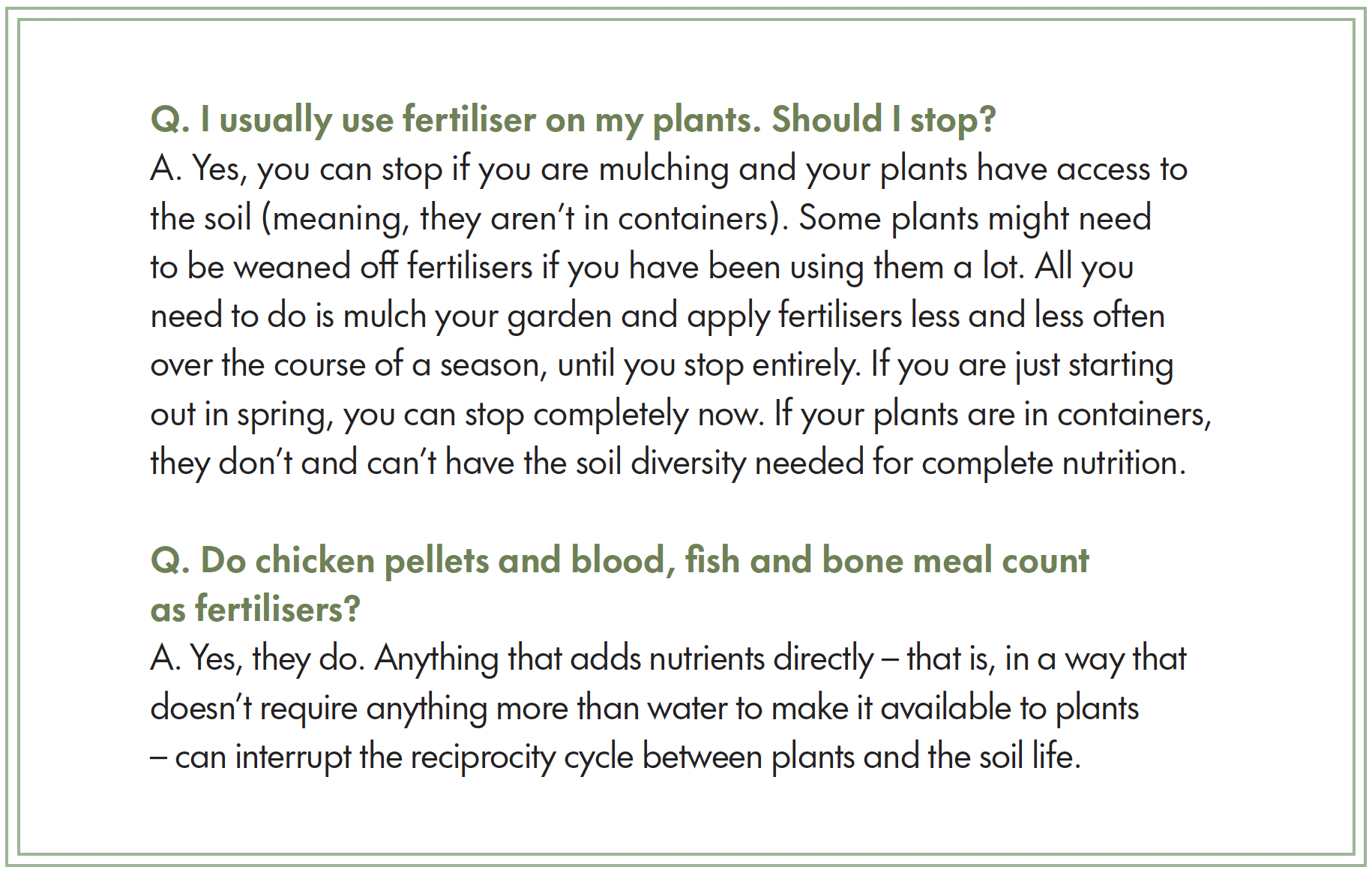
Recommended Reads
Recent Articles
Wintergreen is the stunning evergreen groundcover that’s a game-changer for your garden! It’s cherished for its aromatic leaves, vibrant fall color & bright berries.
Read MoreGrow winter carrots for a sweeter & more flavorful harvest! Ditch the bland, store-bought carrots this winter! Grow your own winter carrots for a sweeter and more flavorful twist 🥕🥕
Read MoreSearching for the perfect book to give the homesteader in your life? We’ve got your go-to books for anyone interested in organic growing, permaculture, soil health, year-round growing & more! What’s their next great read?
Read MoreWinter is coming… but that doesn’t mean you should put away those tools just yet. Extend the growing season well past the first frost!
Read MoreThe dirty truth? Soil isn’t just dirt! It’s a complex web of life. Discover the secrets to unlocking its full potential and transform your garden forever.
Read More

